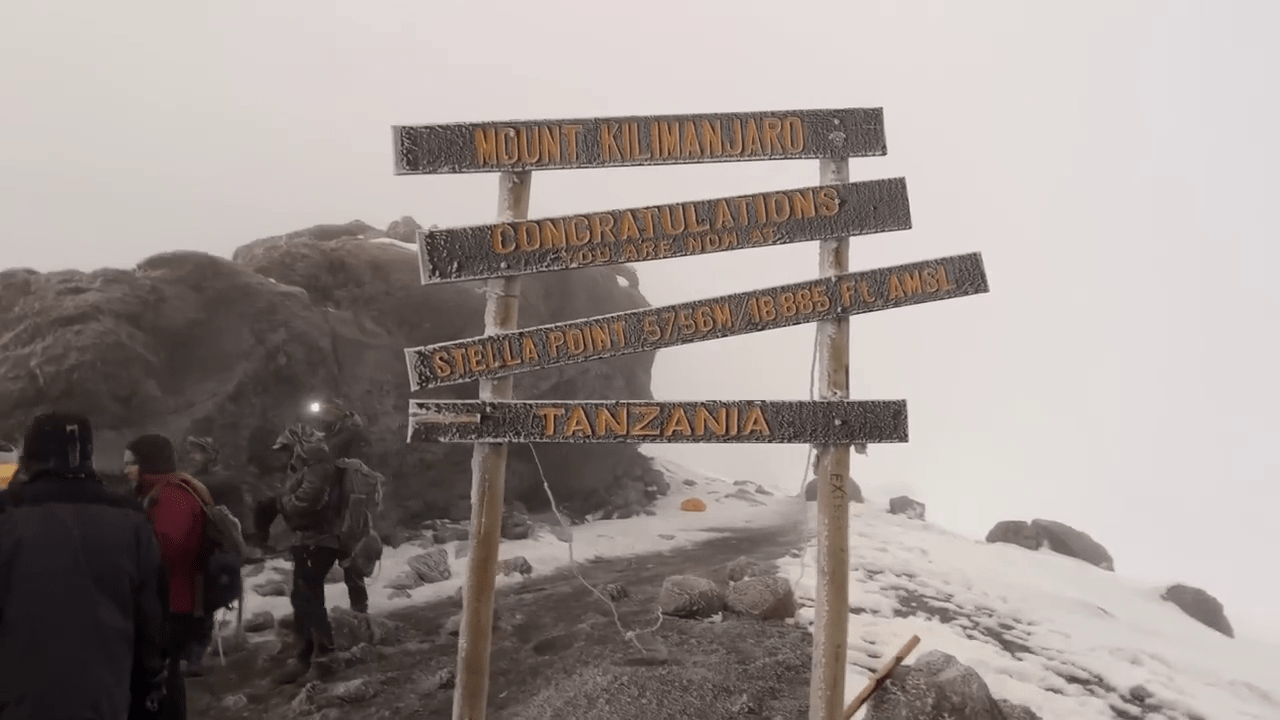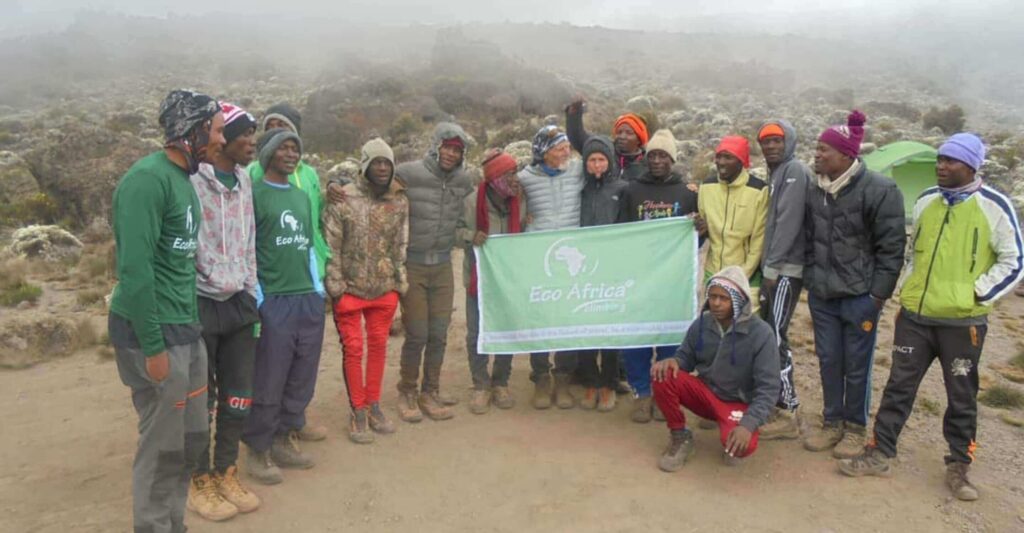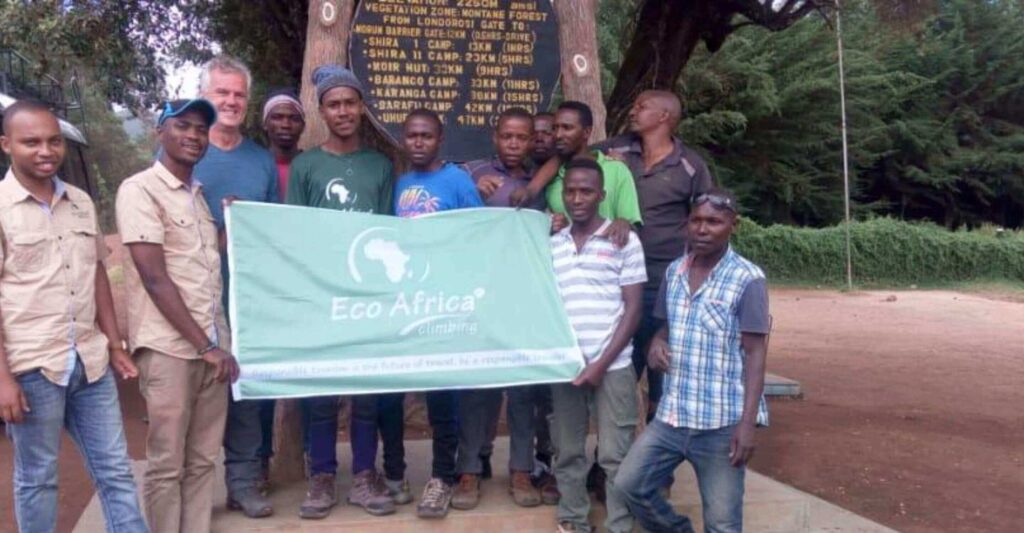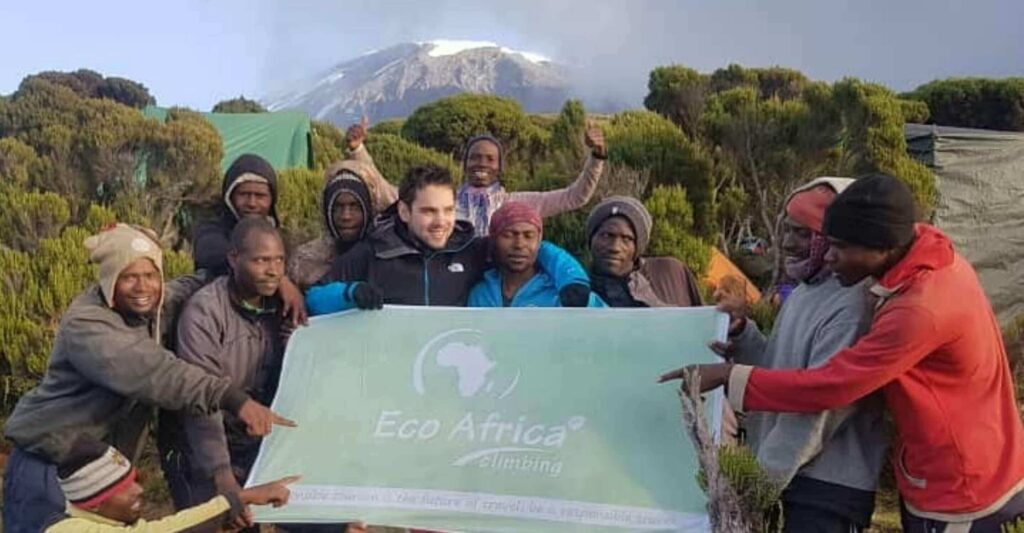KILIMANJARO TIPS FOR A SUCCESSFUL SUMMIT

Unlocking Success on Mount Kilimanjaro: Top Tips to Reach the Summit
Congratulations on Your Kilimanjaro Journey
You’ve made a remarkable choice by deciding to climb Mount Kilimanjaro, the towering pride of Africa. As you embark on this epic adventure, you might be wondering how to ensure your triumphant moment at the summit, Uhuru Peak. Fear not; we’ve got you covered with seven indispensable tips to elevate your chances of success.
Choose a Longer Journey
For an optimal chance at conquering Kilimanjaro and reducing the risk of altitude sickness, it’s imperative to select a longer route to the summit. The number of days you spend on the mountain directly impacts your chances of success. Opting for an 8-day climb offers the highest success rate at 85%. This success rate diminishes to 64% for 7-day, 44% for 6-day, and 27% for 5-day routes.
While a shorter route may seem appealing due to cost savings or the desire for an extra challenge, it’s crucial to prioritize your chances of success. Investing in an extra day at the outset is far more cost-effective than a second attempt. We recommend the 8-day Lemosho route, renowned for its stunning scenery, lower crowds, and favorable success rate. Alternatively, consider the 9-day Northern Circuit route for an excellent choice. These extended durations enhance your odds of reaching the summit.
Prioritize Hiking Preparation
Although Kilimanjaro isn’t a technically challenging mountain, it demands rigorous physical endurance. Altitude alone intensifies the journey. The most effective training for this adventure is hiking, as that’s precisely what you’ll be doing on the mountain. While running and weightlifting can supplement your preparation, the core of your training should focus on hiking.
Incorporate a weighted backpack during your outdoor excursions to simulate the conditions you’ll encounter. If you’re new to hiking, begin with shorter hikes and progressively build up to longer treks. Keep in mind that you’ll be hiking 4-6 hours a day, with summit day requiring 12-14 hours. Building endurance is key, so concentrate on training for duration over intensity. A two-month training regimen before your departure is ideal to ensure you’re well-prepared for the challenge.
Stay Hydrated
At high altitudes, dehydration occurs more rapidly, increasing the risk of headaches, Acute Mountain Sickness (AMS), fatigue, and irritability. To counter these effects, make hydration your top priority.
High-altitude headaches can often result from dehydration due to altitude changes. Sufficient water intake can mitigate these headaches and enhance your overall comfort. While water is available at campsites, it’s advisable to carry a minimum of 3 liters of water to stay hydrated during hikes. Start each day with at least one liter of water before your climb and another liter after completing your daily trek.
Consider using both a water bladder and a water bottle. Water bladders, such as a Platypus, allow you to sip while hiking, but beware that they may freeze as you approach the summit. Carrying a backup water source is wise. Additionally, packing electrolyte packets to supplement your water bottle can provide flavor and maintain electrolyte balance.
Embrace a Gentle Pace
“Pole, pole” is a Swahili phrase frequently heard on Kilimanjaro, translating to “slowly, gently, softly, quietly, be calm, or take it easy.” While tackling a challenge like Kilimanjaro, remember that a slow and steady pace significantly influences your chances of success.
Acclimatizing to the mountain’s reduced oxygen levels requires patience and a gentle approach to prevent altitude-related health issues. Avoid the urge to rush to the next campsite, as this hinders acclimatization. Instead, savor the breathtaking scenery and proceed at a leisurely pace.
During most of your trek, maintain a pace that allows you to converse with fellow climbers. On summit night, adopt a slower pace, incorporating rest steps between each step to conserve your energy. This method, known as “rest-stepping,” is utilized by professional mountaineers to conquer peaks like Everest and K2. Breathing in through the nose and out through the mouth is crucial during this time. Taking it slow ensures a safer and more successful ascent.
Gear Up Appropriately
Selecting the right gear is paramount when embarking on a Kilimanjaro climb. Essential items include waterproof boots that you’ve worn during your extensive training hikes with the same style of socks you intend to wear on the mountain.
To prevent blisters and cold feet, carry additional warm socks and liners. Protect your hands and neck against cold by ensuring you have the necessary gear. Don’t forget sun protection items such as a sun hat and sunscreen, as higher elevations increase the risk of sunburn, which can lead to discomfort and dehydration. A detailed gear list is available for your reference.
Pack Snacks for Sustenance
At high altitudes, people often experience decreased appetites, making it challenging to consume adequate calories for the arduous climb. To combat this, pack your favorite high-calorie snacks to munch on during the journey.
Although meals on Kilimanjaro are nutritious, having familiar, high-calorie comfort snacks can keep you energized. Include items that you’d eat even without an appetite, such as junk food and candy. Keep in mind that you’ll burn off every calorie consumed, and these treats provide the extra energy required to reach the summit. Opt for snacks that won’t melt or freeze, like chocolate, nuts, hard candy, and protein bars. A combination of M&M’s and mixed nuts is an excellent choice, as M&M’s tend not to melt during the lower portions of the climb.
Knowledge is Power
Entering the unknown can be daunting, but preparing your mind with knowledge can alleviate potential challenges. Read extensively about your Kilimanjaro journey to familiarize yourself with the conditions you’ll face and the experiences of other climbers. Personal blogs, travel forums, and YouTube videos provide valuable insights.
Talking to friends or acquaintances who have climbed Kilimanjaro can also offer essential information. Gain an understanding of the journey’s dynamics before you begin, enabling you to manage possible challenges with reduced stress and anxiety.
Follow a Daily Routine
Once on the mountain, you’ll establish a daily routine of waking, eating, hiking, and resting. Adequate sleep is vital at high altitudes, although it may be initially disrupted due to altitude adjustments and jet lag. The quality of your sleep should improve over time, indicating better recovery and acclimatization.
To facilitate recovery, avoid unnecessary exertion throughout the day and take breaks when required. Upon reaching a campsite, take time to relax in your tent, change into sleeping attire, and eat dinner, even if your appetite is diminished. Calories are essential for replenishing energy.
Choose a Reputable Operator
Selecting the right company is crucial for your Kilimanjaro experience. While recommendations from acquaintances are valuable, conduct your research to ensure you opt for a reputable operator. Several operators do not adhere to standardized procedures, resulting in inconsistent service quality.
Established operators with a history of excellence are your best choice. An experienced guide plays a pivotal role in pacing the group, detecting and addressing altitude sickness, enhancing your summit success, and coordinating emergency procedures.
Price should not be the sole determining factor when choosing an operator. Prioritize safety and quality over cost, as cheap or lesser-known companies might not provide the reliable services you require for a successful and safe ascent.
Believe in Your Success
Last but not least, maintain a positive mental attitude. It can be a potent force when fatigue and doubt creep in. Remember, every step counts, and reaching the summit involves taking one step at a time.
Don’t allow yourself to feel overwhelmed or exhausted. This journey is a vacation, so cherish the camaraderie with fellow climbers and have fun along the way. Although summit day may seem daunting, your mindset can make all the difference. In moments of doubt, remind yourself of your inner strength and capability.
Many climbers have attested to their initial doubts, only to conquer Kilimanjaro with determination and resilience. You, too, can overcome any obstacles and reach the summit. Remember, summiting Mount Kilimanjaro is a challenging task, but with adequate preparation, a patient pace, and self-belief, you can achieve this extraordinary feat.
Embarking on a Kilimanjaro expedition is a remarkable journey filled with challenges and rewards. These seven tips will enhance your chances of success, ensuring you reach the magnificent Uhuru Peak, a moment to treasure for a lifetime. So, prepare well, stay committed, and set your sights high.
FAQs: Tips for a Successful Climb on Mount Kilimanjaro
As passionate adventurers set their sights on climbing Mount Kilimanjaro, questions often arise regarding the journey ahead. To assist you in your pursuit of this remarkable achievement, we’ve compiled a comprehensive FAQ that covers the essential aspects of a successful climb. Whether it’s your first time or you’re seeking to enhance your Kilimanjaro experience, read on to find answers to some of the most common inquiries.
Q1: How Do I Improve My Chances of a Successful Climb?
A1: Improving your chances of a successful Kilimanjaro climb requires thorough preparation. Start by choosing a longer route to the summit. Opt for the 8-day Lemosho route or the 9-day Northern Circuit route for better acclimatization and a higher success rate. Long routes increase your chances of reaching Uhuru Peak.
Q2: Is Physical Conditioning Necessary?
A2: Yes, physical conditioning is vital. Kilimanjaro is a demanding climb, and adequate preparation is essential. Focus on hiking as it mimics what you’ll do on the mountain. Train for at least two months before your departure. Include a weighted backpack on your hikes to build strength and endurance.
Q3: How Should I Handle Hydration at High Altitudes?
A3: High altitudes can lead to quicker dehydration. To stay well-hydrated and reduce the risk of altitude-related issues, carry a minimum of 3 liters of water during your hikes. Consider using both a water bladder and a water bottle, and pack electrolyte packets to maintain electrolyte balance.
Q4: What Is the Importance of a Gentle Pace?
A4: “Pole, pole,” a Swahili phrase meaning “slowly, gently,” is the key to a successful ascent. Moving slowly and steadily allows your body to acclimatize to the altitude. During most of the trek, maintain a pace where you can converse with others. On summit night, employ a slower pace, using rest steps to conserve energy.
Q5: What Gear Should I Pack for the Climb?
A5: Selecting the right gear is crucial for a successful climb. Essential items include waterproof boots worn during your training hikes, extra warm socks and liners, and gear to protect your hands, neck, and skin from the sun. Ensure you have sun protection items, such as a sun hat and sunscreen.
Q6: How Can I Maintain My Energy on the Climb?
A6: High altitudes often lead to a decreased appetite. To maintain your energy levels, bring high-calorie snacks that you enjoy, even when you’re not hungry. Packing items like junk food, candy, nuts, and protein bars can provide the necessary energy for your climb.
Q7: Why Is Pre-Trip Knowledge Important?
A7: Pre-trip knowledge helps you anticipate and manage challenges more effectively. Reading accounts of others’ Kilimanjaro journeys, whether through personal blogs, travel forums, or videos, provides insights into what to expect during the climb. Learn from their experiences to minimize stress and anxiety.
Q8: How Can I Maximize Recovery on the Mountain?
A8: Recovery on the mountain is essential for acclimatization. To aid recovery, avoid unnecessary exertion throughout the day. When you reach a campsite, rest in your tent, change into sleeping attire, and ensure you consume dinner for the necessary calories to replenish your energy.
Q9: How Do I Choose a Reliable Kilimanjaro Operator?
A9: Selecting a reputable operator is critical to your success. Conduct research to identify operators with a history of excellence. Experienced guides know how to set the right pace, detect altitude sickness, and ensure your safety. Avoid choosing operators solely based on price, as safety and quality should be the top priorities.
Q10: How Can I Maintain a Positive Mindset?
A10: A positive mental attitude is a powerful tool during challenging moments. Understand that the climb involves taking one step at a time. Enjoy your journey, relax with fellow climbers, and remind yourself that you are stronger than you think. The mental aspect plays a significant role in achieving success.
In conclusion, climbing Mount Kilimanjaro is a formidable yet rewarding adventure. The answers to these frequently asked questions aim to equip you with essential information and tips to enhance your chances of a successful climb. Be well-prepared, maintain a positive mindset, and remember that with determination, anyone can reach the summit.
Our Top Recommended Ethical Kilimanjaro Climbs
Ethical Kilimanjaro via Northern Circuit Route 9 Days
The Northern Circuit route is one of the best routes on Kilimanjaro.The route approaches Mount Kilimanjaro from the west….
From USD $3250
Ethical Kilimanjaro via Lemosho Route 8 Days
The Lemosho route is one of the newer routes on the mountain and a superb choice for your climb, It is our preferred route…
From USD $2950
Ethical Kilimanjaro via Machame Route 7 Days
Machame (“Whiskey”) Route is also known as the “Whiskey” route, the Machame route is now the most popular route on the …
From USD $2650


